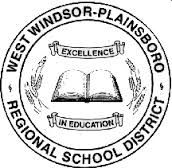By Lea Kahn, Staff Writer
WEST WINDSOR — The West Windsor-Plainsboro Regional School District’s board of education gave its stamp of approval to the public school district’s $171.6 million budget for 2016-17, following a public hearing Tuesday night.
The school board adopted the spending plan — which carries a property tax rate increase for West Windsor taxpayers but not for Plainsboro taxpayers — by a 7-1 vote. School board member Scott Powell voted no. School board member Isaac Cheng was absent.
Mr. Powell thanked the school district administration for its hard work on the budget, but said he could not vote for it because of property tax implications.
“(The budget) is inconsistent with most people’s economic realities,” Mr. Powell said. “People’s (pay) raises are going up slowly. It’s difficult for people to afford higher property taxes. It wasn’t one specific item (in the budget). It’s just finding more ways to save.”
The 2016-17 budget calls for a 3.5-cent property tax rate increase for West Windsor to $1.49 per $100 of assessed value, but a 28-cent property tax rate decrease — to $1.38 — for Plainsboro Township, which recently completed a township-wide property reassessment.
In West Windsor, the owner of a house assessed at the township average of $522,601 will pay $185 more in school district property taxes, or $7,802. But in Plainsboro, the owner of a house assessed at the township average of $451,588 will pay $6,273 in school district property taxes, or $194 less than last year.
The property tax levy of $155.4 million is split between the townships, based on enrollment. West Windsor students make up 58.13 percent of enrollment and Plainsboro students make up 41.87 percent.
Setting the stage for the public hearing, Superintendent of Schools David Aderhold said the budget is a planning tool that also reflects the district’s values. The school district’s mission is to develop all students to become lifelong learners, and to prepare them for the challenges of the 21st century.
The West Windsor-Plainsboro Regional School District is a high-achieving district, he said, pointing to the number of National Merit Scholars finalists and semifinalists, as well as the 93 percent of the 1,009 high school students who took Advanced Placement tests and scored a 3 or better.
The students also take part in plays and musicals, Mr. Aderhold said, adding that “there is a lot to be proud of in this community.” They also participate in community service activities, such as coat drives and fundraisers for nonprofit groups.
Turning back to the 2016-17 budget, Mr. Aderhold pointed to the cost drivers in the spending plan, such as health insurance premiums. It is challenging to budget for health care insurance premiums, because the budget is split over two years — 2016 and 2017. The premiums change in January every year.
The school board also is in negotiations with the teachers’ union, so the percentage of salary increase also is an unknown going forward. He said he does not know how soon the contract negotiations may be settled.
There are technology updates to consider, plus a range of capital projects or improvements that range from playground improvements at the Town Center Elementary School to roof restoration and track resurfacing projects at High school North.
Drilling down to the budget numbers, Larry Shanok, the assistant superintendent for finance, said spending for general education remained flat at $51.9 million, but special education costs have gone up. Out-of-district tuition costs for specialized schools is not limited to a percentage increase, he said.
Professional development costs for teachers increased by 6.8 percent, Mr. Shanok said. Transportation costs have also increased by 9.5 percent, even though gasoline prices have remained stable, he said. Administration costs are flat.
On the revenue side, very little has changed, Mr. Shanok said. State aid, at $8 million, is essentially flat, as is miscellaneous revenue at $2.9 million. The fund balance, or surplus account money, is $5.2 million — also flat. Property taxes are $155.4 million, up from $151.9 million.
When the meeting was opened to the public, several residents questioned the need for nearly 30 supervisors, and suggested hiring more guidance counselors instead. They also pointed to the increase in property taxes.
“Does the school district really need so many supervisors, administrative and non-teaching staff? Why don’t we hire more student guidance counselors, not supervisors,” said Mike Jia. The supervisors go to each teacher’s classroom a couple of times a year to fill out an evaluation form, when the need is for more guidance counselors to help students cope with stress, he said.
“What do we get from this supervisor-centered school system? Messing up curriculum, teaching teachers how to teach, driving good teachers out of town and leaving the students helpless. At least, if our money cannot be put to better use, please save us the money,” Mr. Jia said.
Carol Herts told the school board that property taxes are too high and that many residents are being forced to move. She also said the district does not need as many supervisors, as did Peter Syrek, who also called for more guidance counselors.
Responding to those comments, school board president Anthony Fleres replied that not all of the supervisors are academic supervisors. There are supervisors for payroll, food services and buildings and grounds, for example.

